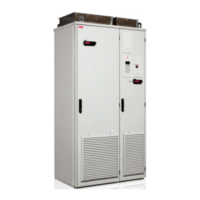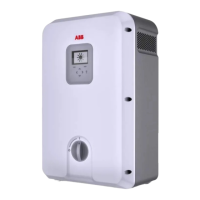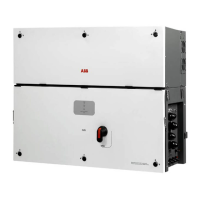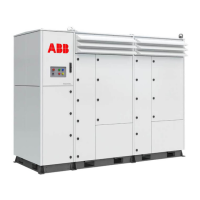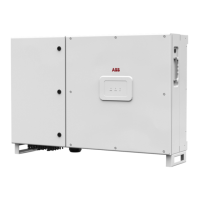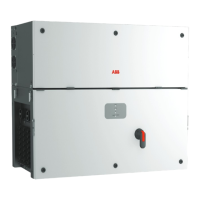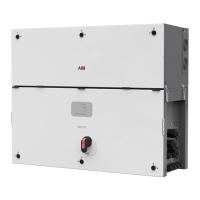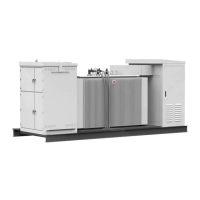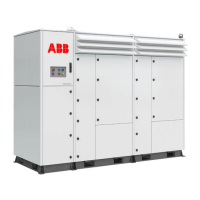Planning the electrical installation 41
Protecting in short-circuit situation and against thermal
overload
Protecting the inverter and AC output cable in short-circuit
situations
The inverter has internal AC fuses or optionally an AC breaker which restrict inverter
damage in case of a short-circuit in the inverter. Install external protection (such as fuses)
according to local regulations, appropriate AC line voltage and the rated current of the
inverter to protect the AC output cable.
Protecting the photovoltaic generator and DC input cable in short-
circuit situations
The input DC fuses protect the inverter DC circuit and the DC input cables in a short-circuit
situation when the cable is dimensioned according to inverter nominal DC current and fuse
ratings. Refer to chapter Technical data on page 45.
To protect inverters delivered without input DC fuses (option +0F291), obey the
instructions in section Inverters without input DC fuses (option +0F291) on page 44.
For the recommended DC input fuse options, refer to DC input fuse recommendations on
page 50.
Note: The inverter does not protect the photovoltaic generator. Install adequate protection
devices to, for example, each string.
Protecting the inverter and the AC output cable against thermal
overload
The inverter protects itself and the AC output cable against thermal overload when the
cable is dimensioned according to the nominal current of the inverter. No additional
thermal protection devices are needed.
Protecting the DC input cable against thermal overload
The input DC fuses protect the DC input cables against thermal overload when the cable is
dimensioned according to inverter input DC fuse ratings. Refer to chapter Technical data
on page 45.
To protect inverters delivered without input DC fuses (option +0F291), obey the
instructions in section Inverters without input DC fuses (option +0F291) on page 44.
For the recommended DC input fuse options, refer to DC input fuse recommendations on
page 50.
When the option (+G417) for DC input current monitoring is selected, the DC input cable
current can be monitored with SCADA or an automation system to achieve additional
protection.
